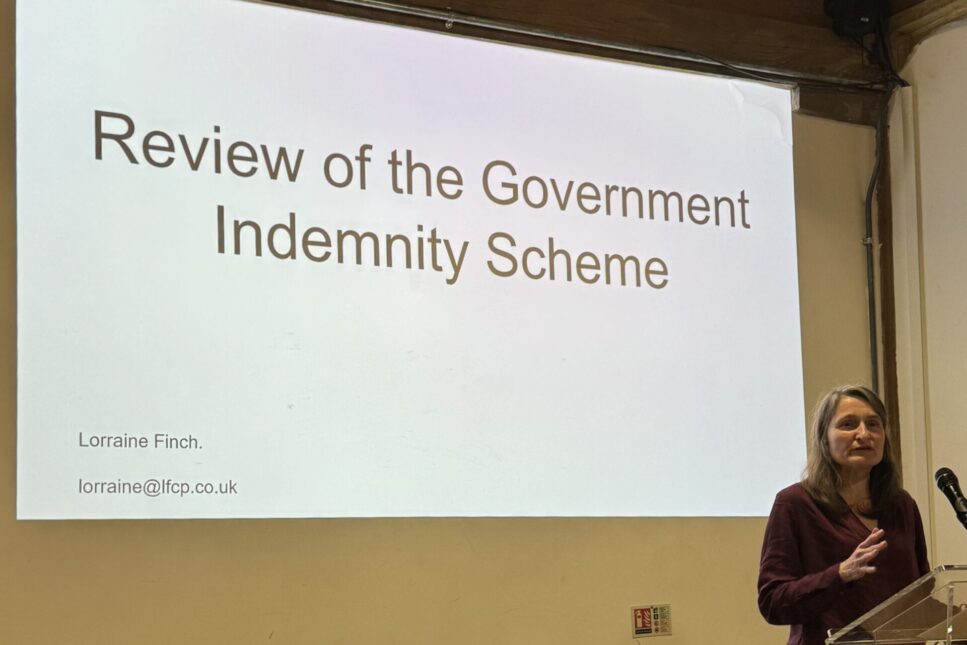
Image: Lorraine Finch, Director, LF Conservation and Preservation presenting at the UKRG AGM
Written by Ellen O’Donnell, Assistant Registrar (Loans), National Galleries of Scotland
Later that day in the UKRG AGM’s proceedings, we were treated to a two-part talk about GIS’ environmental conditions review. Anna Siddall began with an introduction to the why and how of the GIS environmental review. Lorraine Finch then followed, detailing how she approached the research, detailing the findings with real world examples from across the sector.
For context, GIS was last reviewed in 2012, but much of its content dates to the 1990s. Given the ongoing socio-political need to centre actions and discussions around climate, the review focused on the guidelines surrounding relative humidity, temperature and light levels. As a desk-based review, experts were brought in for research and data interpretation.
Interestingly, the key outcome of this review was the realisation that the bases of our sector’s environmental parameters are largely founded on evidence with minimal scientific support, instead relying on the best guesses of the time that since have become law. Furthermore, the review found that collection practices developed in the 1990s were trying to be applied in a 2020s context, and that this was unsustainable.
At a time with overwhelming discourse about climate catastrophe, it was refreshing to hear Anna break down the review’s findings into immediate and medium-term actions. In the immediate term we must work together to refine our environmental parameters, and work to lessen the carbon emissions from other points of loans. As an Australian working in the UK, I find this particularly interesting given our geographic location, transport costs and impact are always high, often prohibitively so. Operationally, immediate term actions also include clarifying and simplifying the guidelines and ensuring consistent information across all forms. In the medium term, there is a desire to create a single point of collections care advice and support, and funding.
Lorraine detailed how the proposal for new environmental parameters hopes to mirror lender’s environmental conditions. This proposal was supported with several case studies. In one example, we were told of a wooden sculpture that had grown used to its cold and damp conditions in a church to such an extent that when it was moved to a “safe” exhibition space, a generation of woodworms had awoken in the relative warmth of the museum environment. As the object had not been allowed adequate time to acclimatise the warm conditions resulted in the woodworm spreading throughout the exhibition, infesting other wooden objects.
Similarly, 19th century ivory objects that had not had the opportunity to acclimatise began splitting when introduced into the unfamiliar, yet, best practice environmental conditions of the museum. As objects age in varyingly conditioned buildings they become accustomed to their surrounding climates. The concluding argument was that each object should be considered individually, as there was no one size fits all approach to environmental conditions.
Lorraine posited the many threats greater than environmental conditions to collection, listing physical damage, fire, water, theft and vandalism. As a stark reminder of accepted risks within museums, Lorraine presented us with an image of the National Museum of Brazil’s devastating fire in 2018, now known to have been ignited by a faulty HVAC system.
These two talks created a lot of food for thought about how we can approach environmental conditions for loans in to the future.

 Instagram
Instagram  LinkedIn
LinkedIn  Twitter
Twitter  My Account
My Account